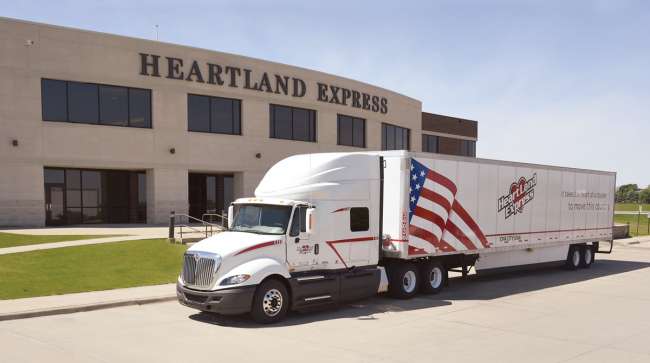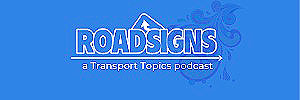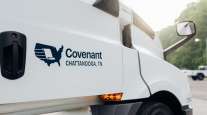Staff Reporter
Heartland Express Targets Major Operating Ratio Improvement

[Stay on top of transportation news: Get TTNews in your inbox.]
Heartland Express is keying in on cost cutting to improve its operating ratio and stem a run of quarters in the red.
The North Liberty, Iowa-based company posted a loss in the fourth quarter of 2024 as the ongoing integration of two acquisitions alongside the industrywide freight recession weighed heavily on its OR.
Carriers’ OR provides insight on how well a company is balancing its costs and revenue generation. The lower the ratio, the better a company’s performance.
Heartland ranks No. 36 on the Transport Topics Top 100 list of the largest for-hire carriers in North America, up from No. 58 a year earlier following the mergers. The company ranks No. 11 among truckload players.
But the integration of Contract Freighters’ nondedicated truckload business and Smith Transport is taking time, although Heartland made progress on improving its OR during 2024.
Heartland posted a net loss of $1.85 million in the three months that ended Dec. 31, compared with a profit of $5.1 million in the year-ago period. The loss was the fourth consecutive quarterly loss.
For the full-year period, the carrier reported a loss of $29.72 million, compared with a $14.78 million profit in 2023.
Heartland’s overall OR in Q4 came in at 99.6, compared with 96.1 a year earlier.
The company’s legacy Heartland Express and Millis Transfer units posted a combined OR of 96.3 in the most recent period, however, its CFI and Smith Transport acquisitions reported a combined OR of 102.6.
That said, there was an across-the-board improvement as 2024 progressed, the company said. Heartland Express and Millis Transfer had a combined OR of 99.9 in the first three months of 2024, while CFI and Smith Transport reported a combined OR of 109.7 in the same period.
Want more news? Listen to today's daily briefing above or go here for more info
Heartland acquired Contract Freighters Inc.’s nondedicated truckload business as well as Mexican entities under CFI Logistica from Montreal-based TFI International in a $525 million deal in August 2022.
Two months earlier, Heartland bought dry van truckload carrier Smith Transport for about $170 million. Roaring Spring, Pa.-based Smith had terminal locations in Pennsylvania, Georgia and Indiana.
The weak freight environment cut the legs out from under Heartland’s integration aspirations somewhat, with CEO Mike Gerdin in October panning the 12 months through the end of September as the worst freight market in more than 45 years.
Still, Gerdin was more optimistic following the most recent quarter.
“Our consolidated operating results for the fourth quarter reflected both sequential and year-over year operating improvement due to a combination of continued progress with acquisition integration, enterprisewide cost controls, and a modestly better freight environment,” he said in a statement accompanying the results.
Host Seth Clevenger and TT's Connor Wolf discuss CES 2025 and the emerging technologies that could push the trucking industry forward. Tune in above or by going to RoadSigns.ttnews.com.
That progress extended into the first few weeks of 2025, he said, adding: “While it is early in the quarter and extreme winter weather conditions so far in 2025 make comparison difficult, we are seeing a positive shift in customer rate and volume negotiations that we expect to strengthen as the year unfolds.”
However, there’s still a long way to go for Heartland, the company’s top executive said.
“Even with the improvement, our operating ratio remains significantly below our historical financial performance and our financial and operational targets,” said Gerdin.
“We are making progress and have significant additional room for improvement through self-help and market uplift when it occurs,” he said. “We expect to continue our focus on cost improvements, operating system integrations, and asset utilization strategies ahead of an expected favorable increase in overall freight demand.”
“Our financial goals continue to be (i) generate an operating ratio in the low to mid 80s, (ii) grow revenue profitably, organically and through acquisitions, and (iii) carry a debt-free balance sheet,” he added.





